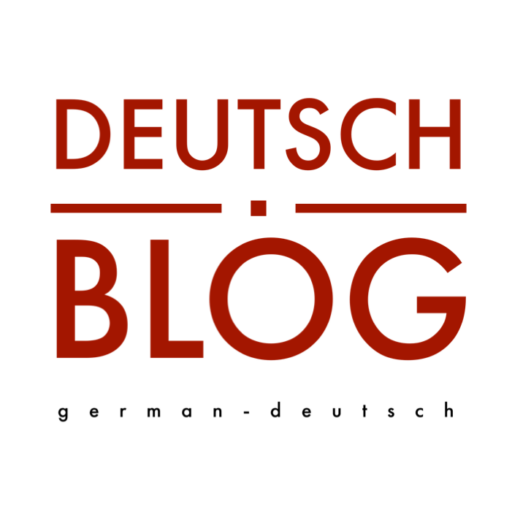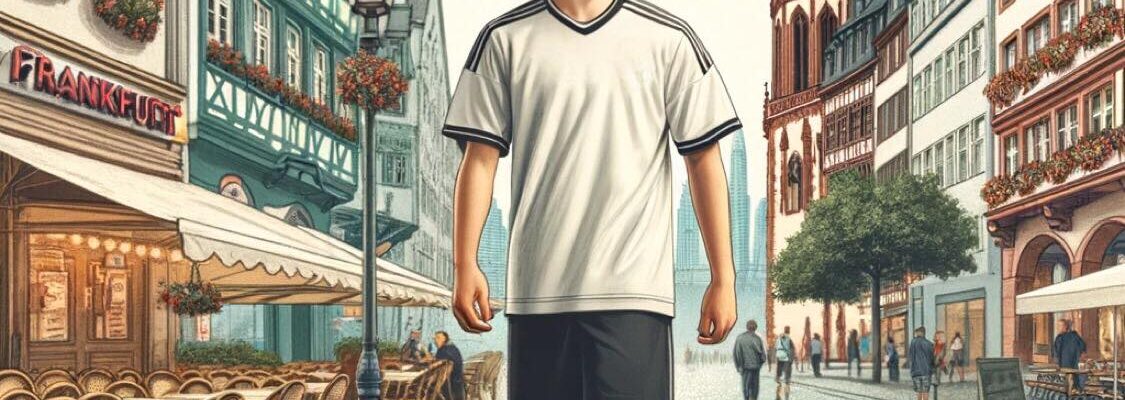A Beginner’s Guide to German Through Football: „Exploring the City (A1/3)“
On his day off, Alex decides to explore the vibrant cityscape, a perfect opportunity to learn German outside the football field. Wandering through the city, he encounters various nouns and their genders – „der“ (masculine), „die“ (feminine), „das“ (neuter) – and uses basic adjectives like „groß“ (big) and „klein“ (small) to describe his surroundings. This chapter immerses Alex and the readers in the practical application of German in everyday life, making language learning a part of his exciting exploration.
Grammar and Vocabulary:
Nouns and Genders:
- der Baum (the tree) – masculine
- die Blume (the flower) – feminine
- das Schloss (the castle) – neuter
Basic Adjectives:
- groß (big), klein (small)
A Walk in the Park
Alex’s stroll through a local park is filled with new vocabulary related to nature. He learns words like „Baum“ (tree) and „Blume“ (flower), and adjectives describing colors like „grün“ (green) and „rot“ (red). This section emphasizes the importance of noun genders and descriptive language in German.
Grammar and Vocabulary:
Nouns:
- Baum (tree), Blume (flower)
Colors:
- grün (green), rot (red), blau (blue), gelb (yellow), schwarz (black), weiß (white)
Visiting a Historical Site
At a historical site, Alex delves into Germany’s rich cultural heritage. He learns terms like „Schloss“ (castle) and „Museum“, and encounters past tense verbs such as „war“ (was) and „hatte“ (had). This experience connects language learning with cultural understanding.
Grammar and Vocabulary:
Cultural Terms:
- Schloss (castle), Museum (museum)
Past Tense Verbs:
- war (was): ich war, du warst, er/sie/es war, wir waren, ihr wart, sie/Sie waren
- hatte (had): ich hatte, du hattest, er/sie/es hatte, wir hatten, ihr hattet, sie/Sie hatten
A Stop at a Café
In a traditional German café, Alex practices ordering in German. He learns food and drink vocabulary like „Kaffee“ (coffee) and „Kuchen“ (cake), and phrases for polite requests, such as „könnte ich bitte…“ (could I please…).
Grammar and Vocabulary:
Food and Drink Vocabulary:
- Kaffee (coffee), Kuchen (cake)
Polite Requests:
- könnte ich bitte… (could I please…)
Shopping in a Local Market
The bustling atmosphere of a local market introduces Alex to numbers, prices, and common shopping phrases. He practices phrases like „Wie viel kostet das?“ (How much does this cost?) and „Ich hätte gerne…“ (I would like…).
Grammar and Vocabulary:
Numbers and Prices:
- Zahlen (numbers): eins, zwei, drei, vier, fünf, sechs, sieben, acht, neun, zehn, elf, zwölf, dreizehn, vierzehn etc.
- Preise (prices): zehn Euro (ten euros), fünfzehn Euro (fifteen euros)
Shopping Phrases:
- Wie viel kostet das? (How much does this cost?)
- Ich hätte gerne… (I would like…)
Chatting with Locals
Simple conversations with locals help Alex practice common questions and responses. He uses phrases like „Wo ist das Museum?“ (Where is the museum?) and „Können Sie mir helfen?“ (Can you help me?), enhancing his conversational skills.
Grammar and Vocabulary:
Common Questions and Responses:
- Wo ist das Museum? (Where is the museum?)
- Können Sie mir helfen? (Can you help me?)
Exercises and Practice
- Vocabulary Matching:
- Match nouns with their genders: der Baum, die Blume, das Schloss.
- Create Sentences:
- Use new adjectives and nouns to describe a city scene, e.g., „Der große Baum neben dem kleinen Café ist grün.“
- Role-play a Café Conversation:
- Practice ordering in German:
- Customer: „Könnte ich bitte einen Kaffee und ein Stück Kuchen haben?“
- Waiter: „Natürlich, das macht zehn Euro.“
- Practice ordering in German:
- Describing Historical Sites:
- Use past tense verbs to describe a visit to a cultural site, e.g., „Ich war im Museum, und es hatte viele interessante Exponate.“
- Shopping Scenario:
- Practice asking for prices and expressing your preferences at a market, e.g., „Wie viel kostet dieser Kuchen? Ich hätte gerne ein Stück.“
- Asking for Directions:
- Formulate questions to ask for directions, e.g., „Entschuldigung, wo ist das Schloss?“
Conclusion
Reflecting on his day exploring the city, Alex realizes how much his German has improved. This chapter showcases how language learning can be seamlessly integrated into daily activities, making it both enjoyable and practical.
Detailed Section: A Walk in the Park Discovering Nature in German
In Grüneburgpark, Alex encounters „der Baum“ (the tree) and „die Blume“ (the flower), practicing noun genders. The park’s wildlife, like „das Eichhörnchen“ (the squirrel), adds to his vocabulary.
Grammar Focus: Nouns and Genders, Basic Adjectives
Dialogue for Practice:
- Alex: “Das ist ein großer Baum. Und dort sind bunte Blumen.” (It’s a big tree. And there are colorful flowers there.)
- Passerby: “Sind das immer Eichhörnchen hier?” (Are they always squirrels here?)
- Alex: “Ja, sie sind überall im Park.” (Yeah, they’re everywhere in the park.)

